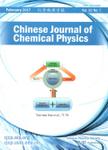Effect of Short Chain Alcohols upon Viscosity of TTAB Solution
Effect of Short Chain Alcohols upon Viscosity of TTAB Solution作者机构:Department of Polymer Science and Engineering University of Science and Technology of China Hefei 230026 China
出 版 物:《Chinese Journal of Chemical Physics》 (化学物理学报(英文))
年 卷 期:2008年第21卷第2期
页 面:169-173页
核心收录:
学科分类:0832[工学-食品科学与工程(可授工学、农学学位)] 08[工学] 0836[工学-生物工程] 082203[工学-发酵工程] 0822[工学-轻工技术与工程] 083203[工学-农产品加工及贮藏工程]
主 题:Relative viscosity Cationic surfactant Organic additive Hydrophobic interaction
摘 要:The effect of ethanol (C2H5OH), propanol (C3H7OH), and butanol (C4H9OH) upon the viscosity of tetradecyltrimethylammonium bromide (TTAB) solution in the presence or absence of KBr at 30℃was investigated, where the surfactant concentration CS is kept constant. In the absence of KBr, the relative viscosity ηr of TTAB solution increases linearly with the alcohol concentration CA, indicating that the alcohols do not promote micelle formation of TTAB. In the presence of KBr, ηr linearly decreases with CA for C2H5OH, but it exhibits a maximum with increasing CA for C3H7OH or C4H9OH. The facts reveal that C2H5OH or C4H9OH promotes the micelle formation of TTAB. A possible explanation is that the hydrophobicity of the mieellar interior is enhanced by KBr, so that C2H5OH or C4H9OH can dissolve in micelle and promotes micelle formation. In the presence of KCl, which is less efficient in promoting the micelle formation of cationic surfactant, both C3H7OH and C4H9OH have only a slight effect on the micelle formation. In contrast, due to the hydrophilicity, C2H5OH cannot dissolve in micelles in the presence of KBr or KCl.



